7th October, 2025
13 Fire Prevention Tips For Construction Sites
Construction sites are at a high risk of fire, so fire prevention must be a top priority when planning and managing construction work. There are a few reasons why a fire could start on your site, but there are ways to make it less likely. Here are 13 tips for fire prevention on construction sites.
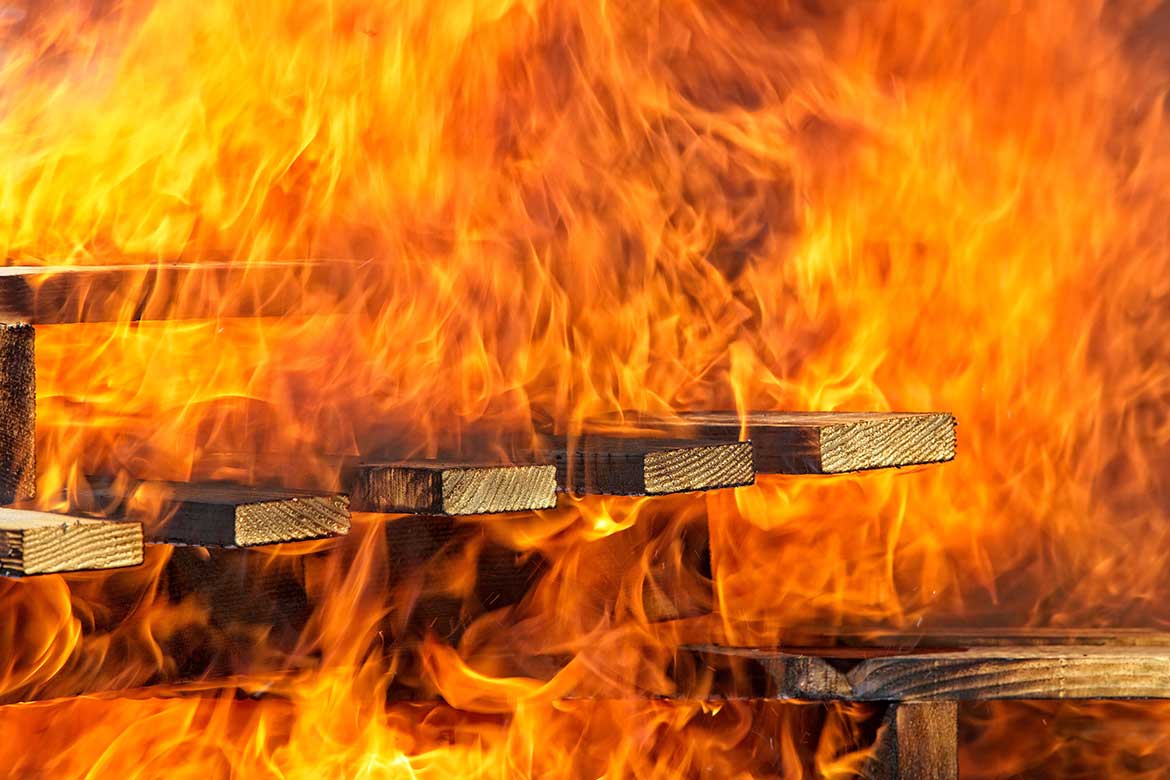
Construction sites are one of the highest risk places for a fire to start. But why are construction sites, in particular, at an increased risk of fire? And what can you do to make your construction site less likely to go up in smoke?
The increased risk of fire on construction sites is due to a variety of factors:
- The presence of flammable waste materials
- The use of flammable and explosive substances like gases and solvents
- The type of work activities, including hot work processes and incomplete electrical systems
- An increased risk of vandalism, trespass and malicious acts
- The nature of the unfinished building
- The storage of (often flammable) building materials on the site increases the damage caused once a fire does take hold, and can also pose increased risks to fire and rescue teams
So fires are more likely to start, and more easily spread, on construction sites. Fire prevention must, therefore, be a top priority when planning and managing construction work.
The good news is, fire risk can be reduced. The simple tips we are about to share can help prevent fires from starting on your sites.
Here are our 13 top tips for fire prevention on site:
1. No fires
The first rule of fire prevention: don't start a fire! This is a really simple tip, but even small fires that are started to get rid of construction waste or keep workers warm can easily get out of hand.
Never attempt to dispose of rubbish by burning it. Site 'bonfires' are forbidden as they can get out of control easily.
2. Keep the site clear
One of the things a fire needs to ignite and grow is fuel. Many waste materials on construction sites are a perfect source of fuel for fires.
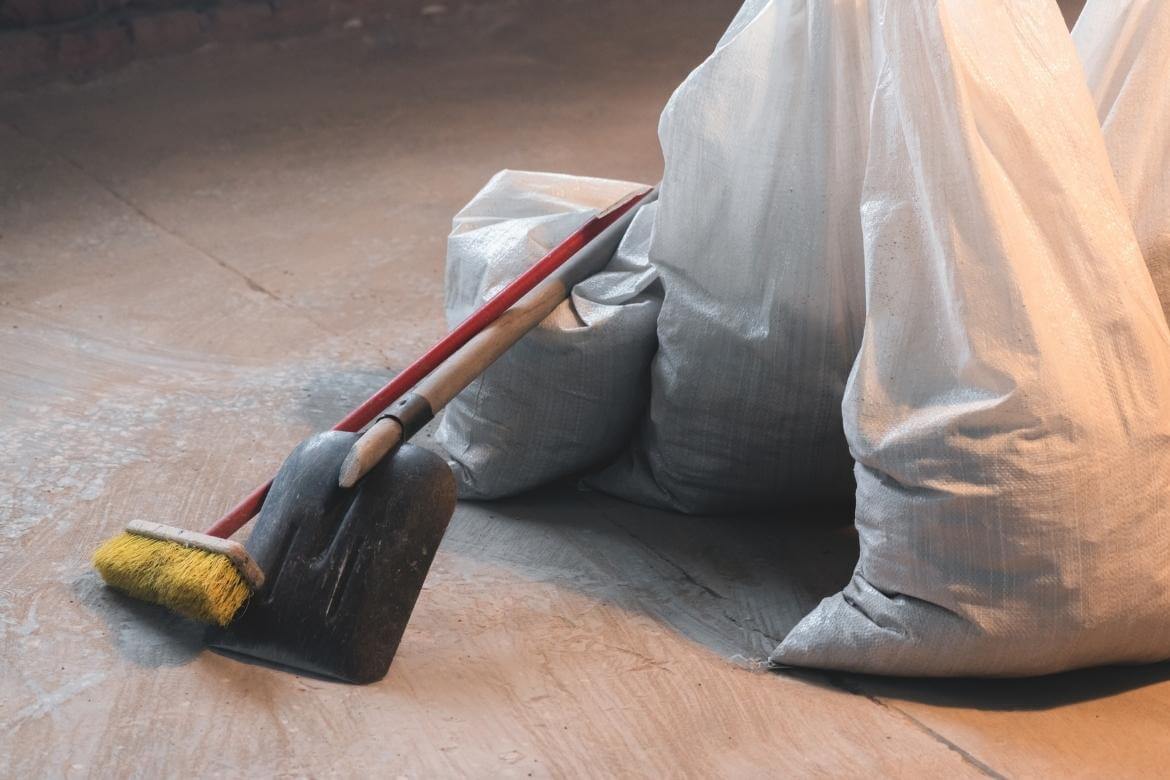
But if you keep your site tidy, by clearing up waste packaging, pallets and material offcuts as you work, you can keep waste minimised and controlled.
Make sure you have somewhere for waste to go, and clear away rubbish and waste regularly to the designated areas. Don’t let waste materials build up around the site.
3. Plan for waste
Keeping your site clear of rubbish is one thing, but waste has to go somewhere. Plan designated areas for waste with fire and emergency procedures in place to confine and deal with a fire should it break out.
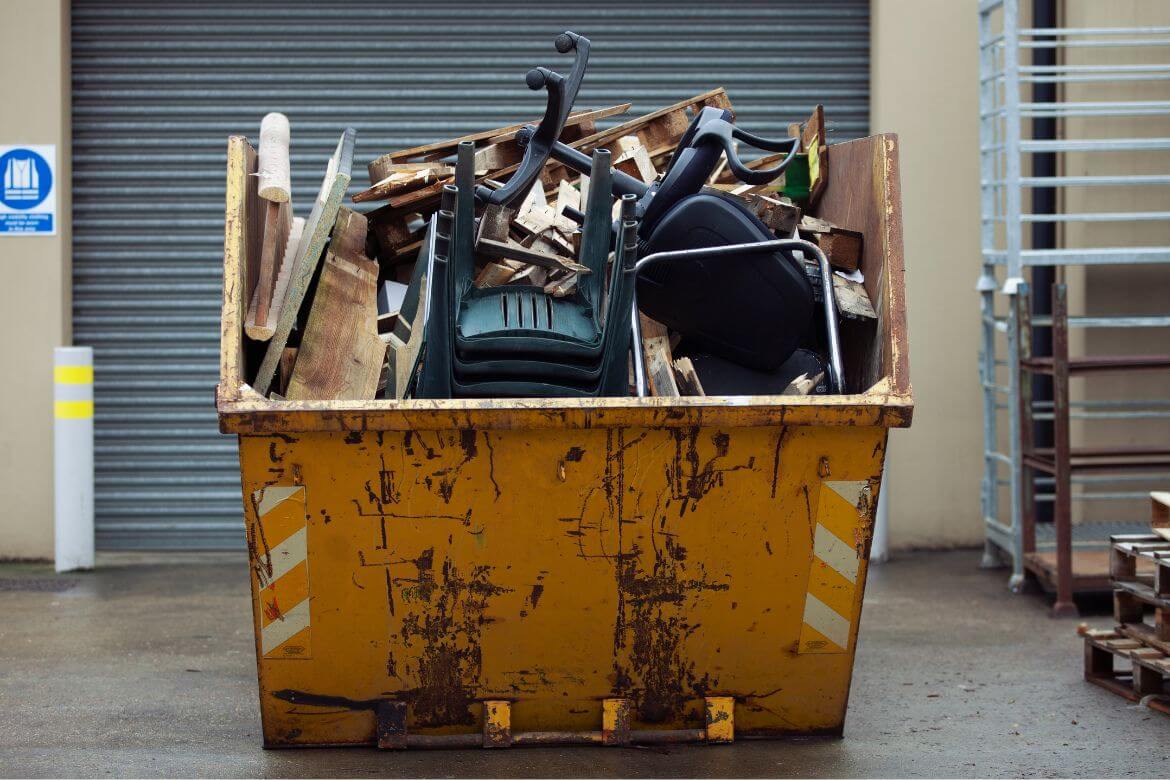
Ideally, skips and other waste containers should be away from the site boundary to reduce the risk of arson, and away from buildings and storage of flammable substances so that if a fire does start, it can't easily spread.
4. Safe electrics
Electrical systems, including temporary supplies, must only be installed by a competent electrician and must be regularly maintained.
Don't forget about portable electrical equipment, which can be easily damaged during construction work due to trailing cables and heavy use. Keep up to date with your PAT testing and visually check equipment for faults or damage before use.
5. Check the compound
Don't forget about your site office, canteen, rest areas, and welfare facilities.
Site compounds are vulnerable to fire because of items like temporary heaters, smoking, intermittent occupation, clothes drying, waste packaging, old newspapers, etc.
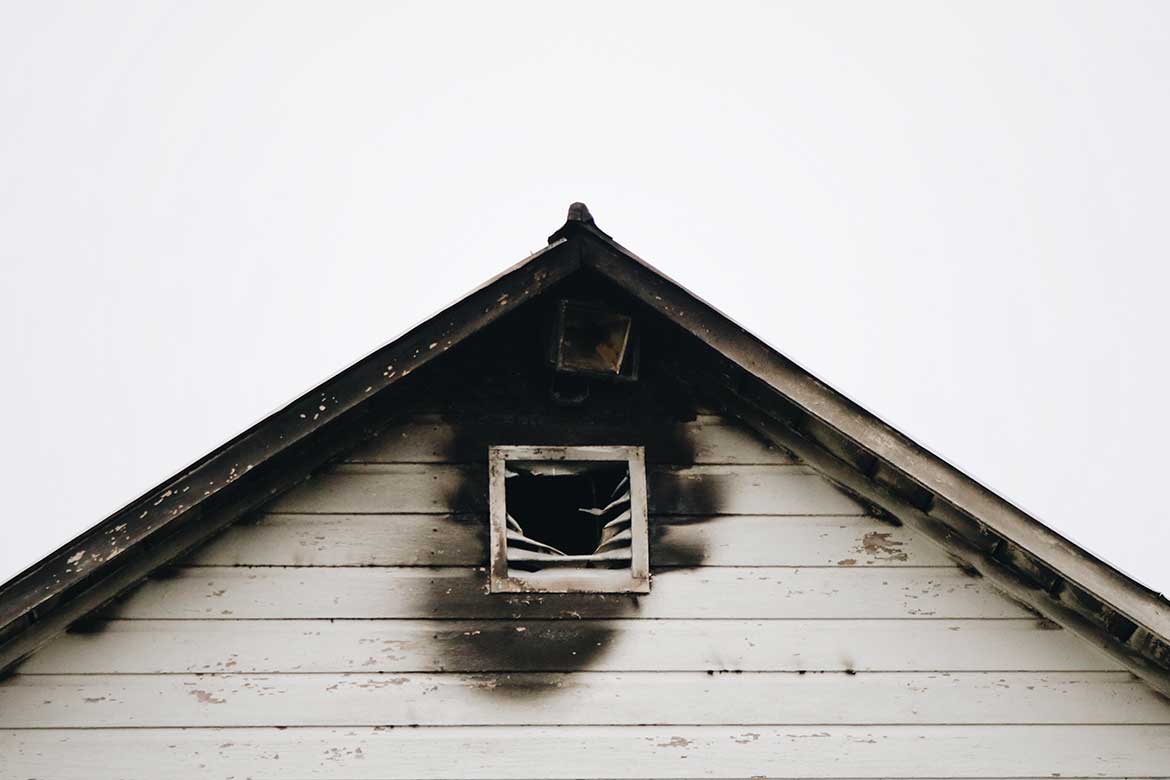
Extra checks should be in place before leaving the site compound. Make sure a fire can't start after you leave!
6. Beware of heaters
Construction sites can be cold places to work, especially when working outside in winter. You might use temporary heaters to keep people warm when your team have been working outside or in a building with no proper heating system installed or running.
But temporary heaters could start a fire.
To prevent fires, your heaters must:
- Be in a safe position
- Be properly installed
- Have fixed guards
- Not be covered
- Not left on unattended
- Be kept away from combustible materials
7. and Lights!
Lights also produce heat and can act as an ignition source, especially high-intensity floodlights. But lights of any size can pose a risk.
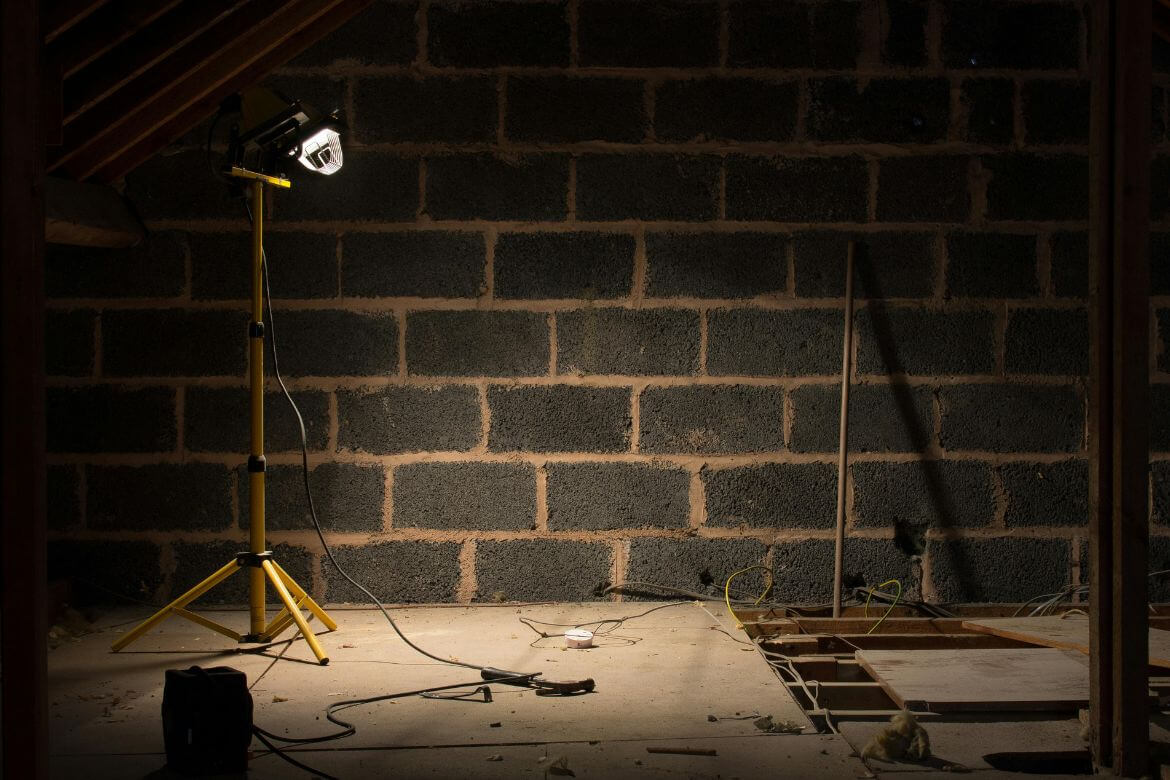
High-intensity lights should not be covered or placed near combustible material. They must be securely fixed to prevent them from falling over. Treat them as though they are heaters.
8. No smoking
Many fires can start accidentally, rather than intentionally, by something as simple as a discarded cigarette end.
Smoking should be carefully controlled and confined to a designated area, on or off-site. Do not smoke in areas of high fire risk or outside of any designated smoking areas. Dispose of matches and cigarette butts carefully.
9. Permits for hot works
Hot work is any activity or process that generates a source of ignition - this could be through a flame, heat or a spark.

Hot works are a big fire risk. Control all hot works with a permit to work system to ensure that the fire risk is adequately controlled. Hot work permits are issued to make sure that necessary checks are made before, during, and after the work.
Before starting hot works, ensure the surrounding area is free of combustible material. Non-removable items must be covered with heatproof blankets. Don't underestimate how far radiant heat and sparks can travel.
10. Fire checks
Smouldering materials, hot equipment and stray sparks can start a fire after hot work has finished.
Stop hot work at least 1 hour before the end of the shift. Fire checks should include continued checks an hour after the work, and regular checks at 20-minute intervals for up to 120 minutes after completion.
11. Provide extinguishers
Ok, this is not exactly a fire prevention tip, since the fire will have already started if you're using an extinguisher. But used correctly, a fire extinguisher can put out a small fire, stop it spreading, growing, and becoming a major emergency on your site.
Not sure about the different types of fire extinguishers? Download the free fire extinguishers toolbox talk and find out.

Always have fire extinguishers readily to hand throughout the site. Make sure you have the right type of fire extinguisher for your construction site, suitable for the classes of fire that may occur, and that enough people are trained how to use them properly.
12. Plan for fire
Put a fire and emergency plan in place. Make sure this forms part of the induction procedure for all site operatives, so people know what to do.

Ensure that everyone knows their part in the fire safety plan, where extinguishers are and how to use them, the evacuation procedure and escape routes, and the rules in place to prevent fires.
13. Fire focus
Cover fire safety and prevention rules at induction, and run regular fire topics during toolbox talks throughout the project. This is especially important if you notice fire safety standards slipping during the project. For example, if waste materials are piling up on the site or blocking escape routes.
Regularly talking about fire safety and prevention helps to raise awareness with your team and increases compliance with the fire prevention rules on your site.
Use the construction fire prevention toolbox talk to discuss important fire safety and prevention rules with your team.
This article was written by Emma at HASpod. Emma has over 10 years experience in health and safety and BSc (Hons) Construction Management. She is NEBOSH qualified and Tech IOSH.
Fire Safety Course
Take our fire safety elearning course and get your certificate today.
Fire Safety CourseRecent posts like this...

What Type Of Fire Extinguisher Should You Use On Construction Sites?
On a construction site, like any other workplace, you should always have suitable fire extinguishers readily available and a fire and emergency plan in place. But what type of fire extinguisher should you use on a construction site? Water, foam, powder, carbon dioxide, or wet chemical?
Read Post
13 Fire Prevention Tips For Construction Sites
Construction sites are at a high risk of fire, so fire prevention must be a top priority when planning and managing construction work. There are a few reasons why a fire could start on your site, but there are ways to make it less likely. Here are 13 tips for fire prevention on construction sites.
Read Post
Who Is Responsible For Completing A Fire Risk Assessment?
Fire risk assessments are a legal requirement for any building that isn't a single private dwelling. But who is responsible for completing the fire risk assessment? In this blog post, we learn about the responsible person under the Regulatory Reform (Fire Safety) Order (RRFSO).
Read Post